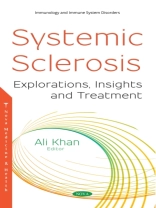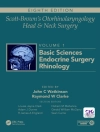Progressive systemic sclerosis/scleroderma is a complex multi-organ autoimmune connective disease that has protean manifestations; although mostly pulmonary, other organs are involved in circumstances that manifest as overlap syndromes. Progressive systemic sclerosis/scleroderma affects adult patients with a female predominance, but children are not immune. A common theme includes tissue fibrosis and vasculopathy. Skin sclerosis is a common occurrence, but clinical findings can be associated with skin inflammation, fibrosis, and vascular changes, which are most pronounced in the fingers, toes, and around the nose and mouth. There is variable visceral organ involvement including the esophagus, the bowels, and the kidneys, but vasculitis can affect any organ. Any visceral organ – including the brain – can be affected. The extent of system involvement and the variety of clinical presentation makes accurate diagnosis elusive. The differentiation between liver disease secondary to connective tissue disorders and primary liver disease such as hepatitis can be extremely challenging since there is a similar immunological mechanism of causation. Most patients with connective tissue diseases exhibit liver function abnormalities that likely result from coexisting, fatty liver, viral hepatitis, primary biliary cirrhosis, portal hypertension, autoimmune hepatitis and hepatic toxicity due to drugs. Liver damage (whatever the cause) can be progressive and ultimately fatal. The challenges we face in the diagnosis of liver damage secondary to connective tissue and differentiation from the primary liver disease are challenging. Diagnosis is therefore vital – whether by invasive or non-invasive techniques – to institute appropriate management. Early reviews of the pathophysiological, clinical and pharmacological aspects of scleroderma (PSS) suggested that the disease was complex, of chronic nature and slow in onset. The pathophysiological changes are variable; affecting the blood vessels, the collagen fibers, the connective tissues, and deposition of fibrin and inflammatory reactions. Any fibril-containing organs can be affected as well. The most common presentations are Raynaud’s phenomenon of the extremities, mainly the arms and hands, vascular inflammation and fibrosis, firm facial skin, and the limitation of joint movement by pericapsular, soft tissue calcification. Atrophy of the gastrointestinal tract’s smooth muscles, particularly of the gastric cardia, is also possible. The changes described may cause malabsorption. Lung changes are common due to progressive pulmonary fibrosis, leading to right-sided heart failure and respiratory insufficiency. Involvement of the liver, kidneys and the endocrine glands are, however, rare. Any organ may be affected, but mortality increases when the heart, kidney, or lungs are affected. Various therapeutic regimens have been instituted with variable success, including the use of vasodilators, corticosteroids, and a variety of anti-inflammatory agents. Some success with excellent therapeutic effects without serious side effects has been achieved.
Ali Nawaz Khan
Systemic Sclerosis [PDF ebook]
Explorations, Insights and Treatment
Systemic Sclerosis [PDF ebook]
Explorations, Insights and Treatment
Cumpărați această carte electronică și primiți încă 1 GRATUIT!
Format PDF ● Pagini 291 ● ISBN 9781536135053 ● Editor Ali Nawaz Khan ● Editura Nova Science Publishers, Inc. ● Publicat 2018 ● Descărcabil 3 ori ● Valută EUR ● ID 6890192 ● Protecție împotriva copiilor Adobe DRM
Necesită un cititor de ebook capabil de DRM












